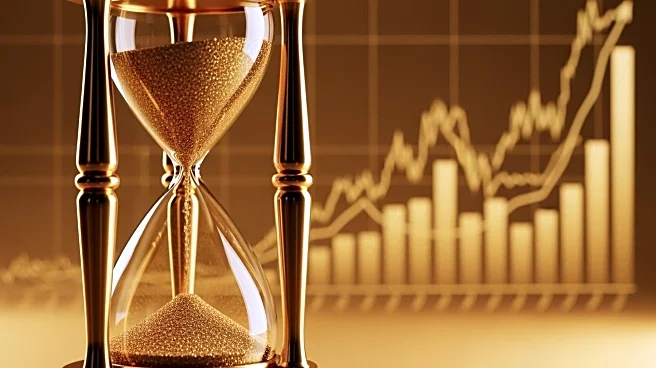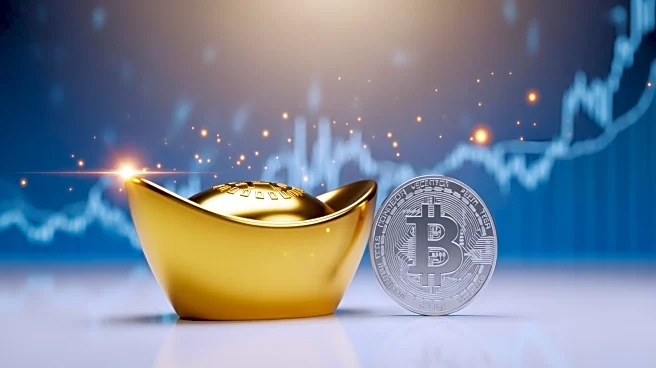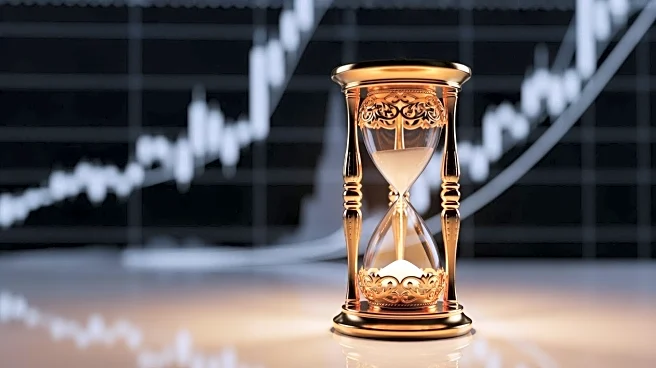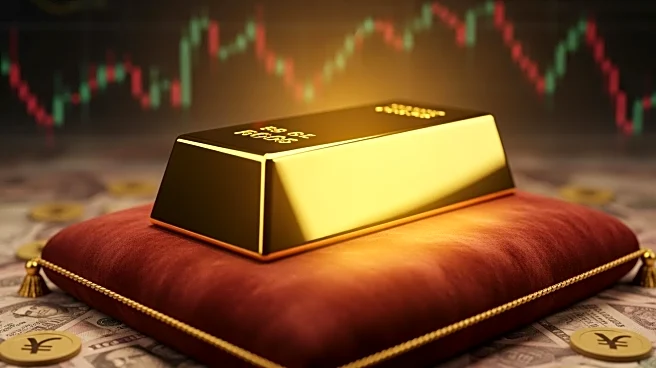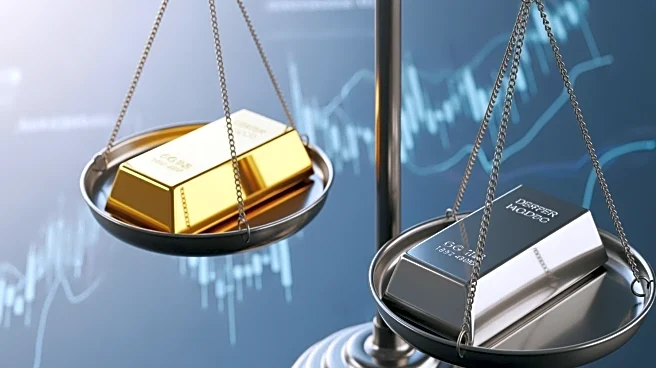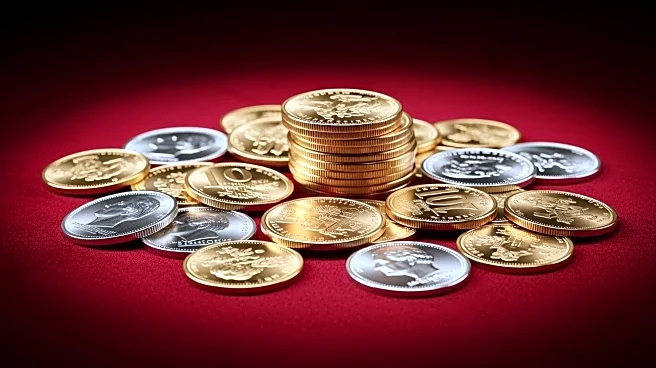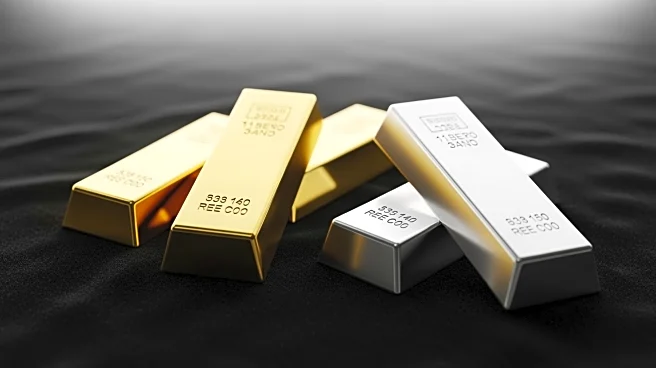What's Happening?
Gold prices are projected to continue their upward trajectory, with analysts predicting an annual average price exceeding $4,000 per ounce for the first time in 2026. This forecast comes amid ongoing economic and geopolitical turmoil, which has bolstered
gold's status as a safe-haven asset. A recent poll of 39 analysts and traders indicates a median forecast of $3,400 per troy ounce for 2025, up from $3,220 in July, with expectations for prices to average $4,275 in 2026. Gold has already achieved a 54% increase this year, marking its strongest annual performance since the 1979 oil crisis. The metal's rise is attributed to a loss of confidence in policymakers, currencies, and the financial system, alongside central bank purchases and inflows into exchange-traded funds.
Why It's Important?
The projected rise in gold prices reflects broader economic uncertainties and a shift in investor sentiment towards safe-haven assets. As geopolitical tensions and trade disruptions persist, gold's appeal as a hedge against instability is likely to grow. This trend could have significant implications for investors and financial markets, as gold becomes a more central component of investment portfolios. Additionally, central banks' continued purchases for reserve diversification highlight a strategic shift away from dollar dominance. The sustained demand for gold could influence monetary policies and impact global financial stability.
What's Next?
Analysts anticipate that while gold prices will continue to rise, the pace may moderate. Central banks are expected to maintain their gold purchases, and investors are likely to treat gold as a core portfolio asset. This ongoing demand could further drive prices upward, although jewelry demand may remain constrained by high prices. The strategic purchases by the official sector, along with retail and institutional investment flows, are expected to be the primary drivers of gold's continued rally.
Beyond the Headlines
The rise in gold prices also underscores a deeper loss of confidence in traditional financial systems and currencies. As investors seek alternatives to the dollar, gold's role as a monetary hedge is being reinforced. This shift could lead to long-term changes in how financial markets operate, with potential impacts on currency valuations and international trade dynamics.
